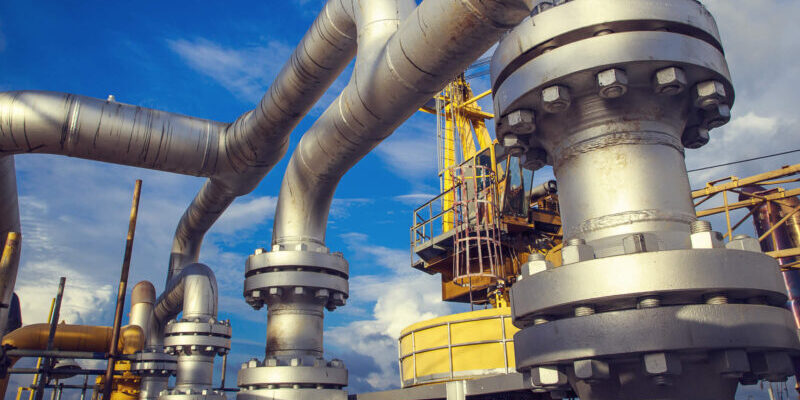Machine Learning in the Oil and Gas Industry: ML Roles and Applications
Machine learning (ML) is a technology that is having a critical impact on the oil and gas industry and is becoming an important technology for industry stakeholders. Here is where it is having an impact today, what ML applications are being used, and what the future holds.
What Is Machine Learning?
Machine learning is a branch of artificial intelligence (AI) in where computer systems are trained to receive large sets of data and derive a conclusion. This training can come in addition to or instead of manual programming.
These intelligent machines learn over time using the data they receive and update themselves to perform better the next time based on their experience.
This AI process can be compared to the way people learn. Children don’t need to be programmed to understand the world. Instead, they learn by watching their parents and the environment around them.
As they learn and grow, they behave differently based on their new experiences and focus on the things that bring the most value. Similarly, machine learning can help oil and gas companies use data to focus more of their time on the highest-value opportunities.
Of course, the more data companies have, the better their machine learning opportunities will become. This is an exciting prospect for oil and gas companies, which regularly deal with mountains of information about oil and gas pipelines, well testing, geophysical data, and much more.
An accurate statistical analysis of this data can help make millions of dollars’ difference to a company’s bottom line. Learn more here for a primer on what is machine learning.
ML in the Oil and Gas Industry
ML in the oil and gas industry can be divided into three main categories:
1. Extraction of knowledge from data. As mentioned, the oil and gas industry generates enormous data. However, that data is of little use stored in a logbook or computer program. With the help of machine learning, this data can be processed to make the inferences and decisions that can shape a company’s trajectory.
2. Predictive analytics for planning and forecasting. Oil and gas companies can also put past data to use, such as one well’s oil production history or a collection of seismic surveys done in a certain area. Machine learning can help companies use that data to make predictions.
For example, if a company has collected data regarding how oil production from wells typically varies during the year, they can use machine learning to predict how much oil will be produced in future years. This knowledge can then be used for long-term planning to make the oil company more profitable.
3. Optimizing production through data. When oil and gas companies are extracting fuels from the earth, it is critical to do so as efficiently as possible. Machine learning can help companies use their data to identify the most efficient ways to set up production. This can include anything from determining optimal well spacing, deciding where to drill, and testing different techniques for fracking.
These three categories exhibit how machine learning can help oil and gas companies make better decisions today and plan for the future based on past data. This will be critical as they face the challenges of improving their workflow while adapting to new technologies.
Machine Learning Applications in the Oil & Gas Industry
There are several areas where machine learning can be applied to help improve oil and gas industry workflows, including:
Real-time drilling
Reservoir engineering
Oil and gas production and procurement
Downtime prevention
Well testing
Geophysical analysis
And more
What many people do not yet realize about machine learning is how it can benefit humans on the job. The above application areas include a wide range of tasks that involve oil and gas industry employees. Machine learning can help these employees become more efficient at their jobs, help them make better decisions, and improve the quality of products they produce.
What are the ML challenges in Oil and Gas?
Machine learning is already making a positive impact across many industries. However, the transition will not happen overnight. As the oil and gas industry prepares to incorporate machine learning, it is important to recognize the challenges involved:
Increased need for scientists. The first significant challenge is the oil and gas industry’s need to hire data scientists qualified to extract knowledge from industry data.
This may be difficult for companies that already have a shortage of workers or companies in regions where there aren’t many people with data science skills.
Data processing power. Another challenge is the large amount of data oil and gas companies deal with daily. This means that the machines doing the analysis will need to be very powerful to process it all in a reasonable amount of time.
Up-front time investment. Finally, training the machine learning algorithms to recognize valuable data patterns for oil and gas companies will require a great deal of time and effort. However, the payoff of accurate models to make data-backed decisions will be worth it for oil and gas companies.
The realization that machine learning techniques can be successfully deployed for oil and gas companies is still occurring across the industry. As more energy companies investigate ML use cases, we will see an increase in its adoption. This will certainly change how oil and gas companies operate, and it is just one example of how data science is changing how we do business.
The Future of Machine Learning in the Oil and Gas Business
Oil and gas companies are already using machine learning to help with prediction models, produce better results from their resources, and optimize their processes. Machine learning has the power to revolutionize the oil and gas industry. This forward momentum is crucial for the sector solely responsible for keeping the rest of society moving.
In the coming years, we will see more and more ML technologies used by oil and gas companies around the world. In fact, the future of the oil and gas industry can be found in the convergence of many different technologies, including machine learning. Companies who adapt early can improve their resource optimization and gain a more detailed look at their progress.
128 total views , 1 views today




